The Intel Skylake-X Review: Core i9 7900X, i7 7820X and i7 7800X Tested
by Ian Cutress on June 19, 2017 9:01 AM ESTBenchmarking Performance: CPU Rendering Tests
Rendering tests are a long-time favorite of reviewers and benchmarkers, as the code used by rendering packages is usually highly optimized to squeeze every little bit of performance out. Sometimes rendering programs end up being heavily memory dependent as well - when you have that many threads flying about with a ton of data, having low latency memory can be key to everything. Here we take a few of the usual rendering packages under Windows 10, as well as a few new interesting benchmarks.
Corona 1.3
Corona is a standalone package designed to assist software like 3ds Max and Maya with photorealism via ray tracing. It's simple - shoot rays, get pixels. OK, it's more complicated than that, but the benchmark renders a fixed scene six times and offers results in terms of time and rays per second. The official benchmark tables list user submitted results in terms of time, however I feel rays per second is a better metric (in general, scores where higher is better seem to be easier to explain anyway). Corona likes to pile on the threads, so the results end up being very staggered based on thread count.
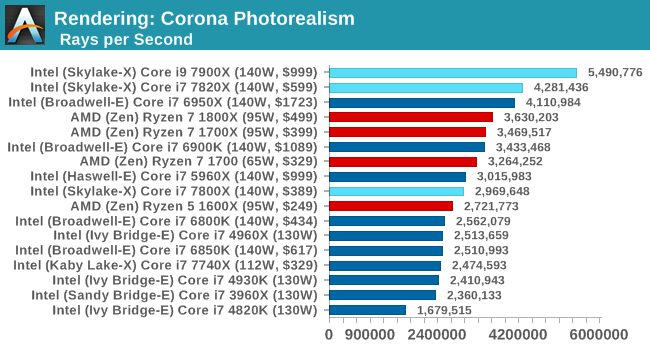
Blender 2.78
For a render that has been around for what seems like ages, Blender is still a highly popular tool. We managed to wrap up a standard workload into the February 5 nightly build of Blender and measure the time it takes to render the first frame of the scene. Being one of the bigger open source tools out there, it means both AMD and Intel work actively to help improve the codebase, for better or for worse on their own/each other's microarchitecture.
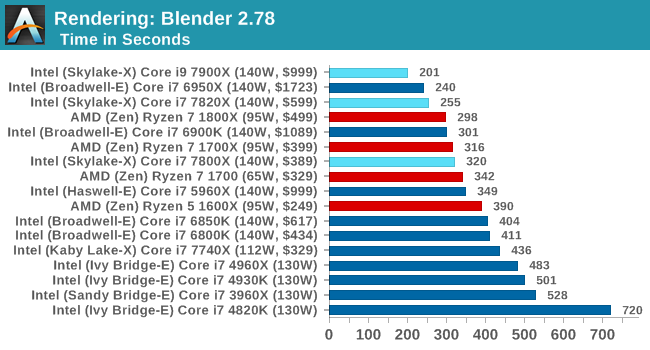
LuxMark
As a synthetic, LuxMark might come across as somewhat arbitrary as a renderer, given that it's mainly used to test GPUs, but it does offer both an OpenCL and a standard C++ mode. In this instance, aside from seeing the comparison in each coding mode for cores and IPC, we also get to see the difference in performance moving from a C++ based code-stack to an OpenCL one with a CPU as the main host.
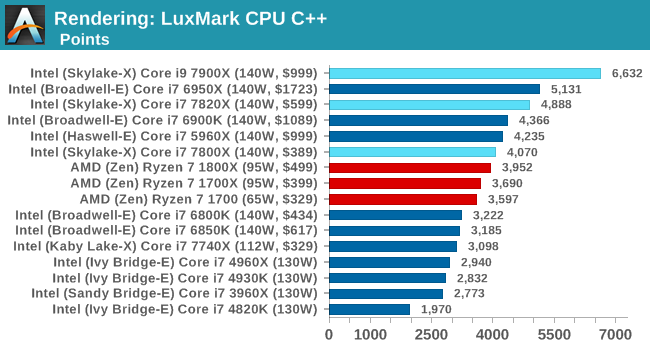
POV-Ray 3.7b3
Another regular benchmark in most suites, POV-Ray is another ray-tracer but has been around for many years. It just so happens that during the run up to AMD's Ryzen launch, the code base started to get active again with developers making changes to the code and pushing out updates. Our version and benchmarking started just before that was happening, but given time we will see where the POV-Ray code ends up and adjust in due course.
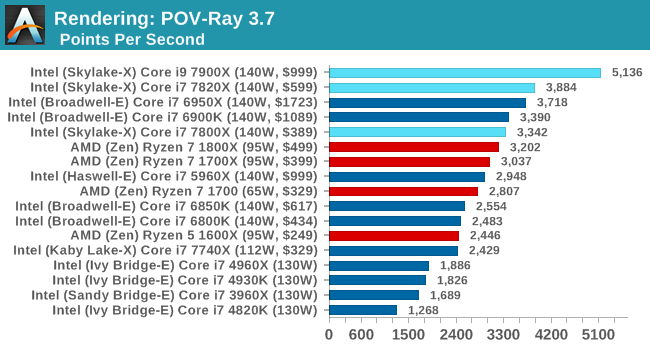
Cinebench R15
The latest version of CineBench has also become one of those 'used everywhere' benchmarks, particularly as an indicator of single thread performance. High IPC and high frequency gives performance in ST, whereas having good scaling and many cores is where the MT test wins out.
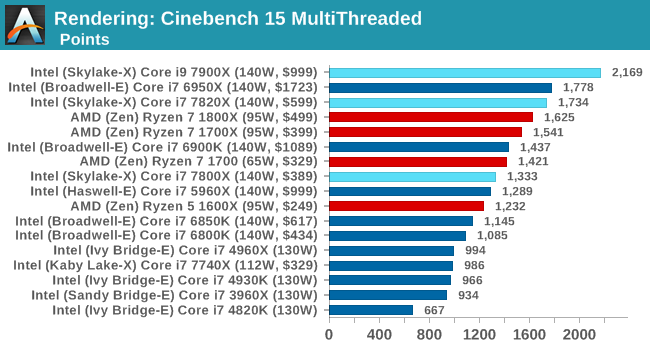
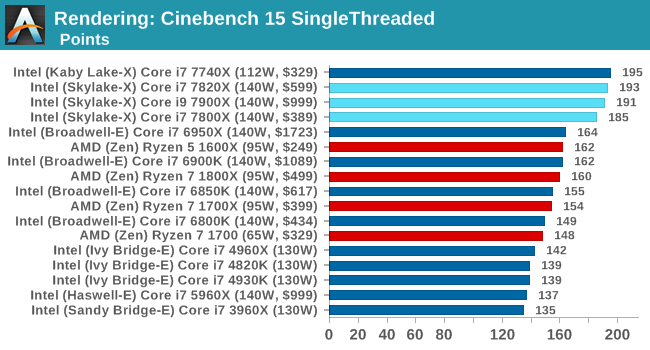










264 Comments
View All Comments
Ian Cutress - Monday, June 19, 2017 - link
Thanks!Cellar Door - Monday, June 19, 2017 - link
Good review Ian! But you would agree that this launch feel very 'half-baked'?I don't think there ever was an Intel launch with this many issues on the platform at start.
Ryan Smith - Monday, June 19, 2017 - link
"I don't think there ever was an Intel launch with this many issues on the platform at start."Intel always rolls out some new technology on their HEDT processors, which usually invokes teething issues. X99/HSW-E was the first DDR4 platform, and X79/SNB-E launched with some pretty gnarly PCIe 3.0 issues. So X299/SKL-X is fairly similar to past launches, for better or worse.
Drumsticks - Monday, June 19, 2017 - link
Still working my way through some of the review, but: "The latest KNL chips use 72 Pentium-class" on the microarchitecture analysis page is wrong. Knights Corner was derived from a Pentium but KNL is derived from Silvermont.Ryan Smith - Monday, June 19, 2017 - link
Thanks!Drumsticks - Monday, June 19, 2017 - link
Just finished. Thanks for the review. I look forward to seeing updated gaming benchmarks. Would have loved to see what you had similar to Kaby Lake X showing up here and there, but I understand not wanting to show incomplete data. I trust the editorial integrity of Anandtech more than the comment section, so I'm not crying foul. Can't wait for the follow up!Ian Cutress - Monday, June 19, 2017 - link
Some Kaby-X data is in Bench, mostly the CPU stuff. I need to replace my Kaby i7 that failed.Drumsticks - Monday, June 19, 2017 - link
Will take a look then, thank you!Vanquished - Monday, June 19, 2017 - link
Never visiting your site again. You make excuses for Skylake-X crappy gaming performance but were more than happy to bash AMD for the same issue.What a load of crap, shame on you.
Slappi2 - Monday, June 19, 2017 - link
Wow. RageQuit because you don't like the truth. It's a CPU!